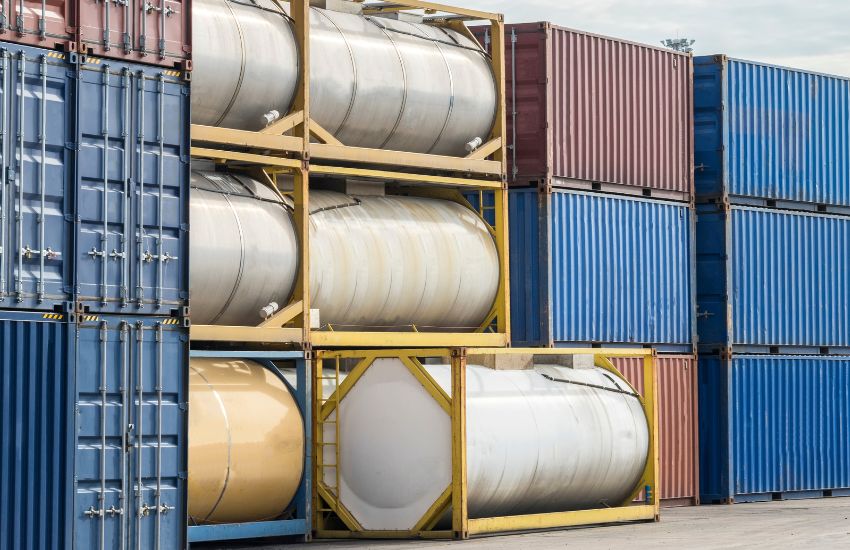The Role Of Tank Container Logistics In Supply Chain Resilience
Tank container logistics solutions can come in handy during uncertain times. Supply chain resilience became a significant discussion point in 2021 during the Suez Canal obstruction with the grounded Ever Given when container vessel capacity and equipment were already tight with port congestions, low sailing frequencies, container shortages, and elevated freight. That event and the pandemic stressed our strained global supply chain and highlighted the need for supply chain resilient business models. Nevertheless, 2021 saw a significant boost in the tank container market, with the global tank container fleet reaching 736,935 units by 1 January 2022, according to ITCO International Tank Container Organisation.
This article is written by Rudi Stalmans and featured in the 2022 Tank Container Supplement of Tank News International.
This is the third post in our tank container blog series. Read our first and second posts in this series – The Simple Tank Container Guide: Five Things You Need to Know and Ten Tips For A Sustainable Shift To Tank Containers.
The consequences of vessel and cargo delays
The shipping industry made record profits in 2021 against soaring freight rates. With increasing delays and empty containers sitting in the wrong places globally, shippers have absorbed higher shipping and logistics costs. Container carriers have been keeping supply aligned with demand through blank sailings by canceling complete routes or leaving out ports from their schedule. According to Drewry Weekly analysis of 29 April 2022, for Transpacific, Transatlantic, and Asia-North Europe & Med, 56 canceled sailings were announced between weeks 18 and 22, out of 728 scheduled sailings, representing a cancellation rate of 8%. During the same period, Owners had planned 59% of the blank sailings for the Transpacific Eastbound and West Coast trade. Other common causes of delays include weather, labor shortages, port congestion, hinterland delays, and pan[1]demic-related lockdowns.
The implications of vessel and cargo delays and poor schedule reliability are multiple and affect both the commercial and operational features of the businesses of all stakeholders in the supply chain. They can include an increase in TCO, delayed sales and manufacturing, money tied up in inventory buffers and lower cash flows, increased risk of damage, and lower asset turnover.
How can tank container logistics improve supply chain resilience?
Supply chain resilience is a company’s ability to navigate unexpected supply chain disruptions with its existing capabilities. It is the ability to react to problems and recover from them without a significant impact on operations and customer timelines.
The pandemic and Suez Canal blockage served as a crucial wake-up call for many supply chain leaders as it exposed their unpreparedness to disruptions.
Tank container logistics can play a crucial role in a business continuity plan that deals with supply chain disruptions. It is critical to gain the ability to recover quickly without impacting customer delivery timelines, conserve multiple sourcing options and develop supply chain agility.
During the last 12 months, tank container logistics came in handy for some shippers to solve supply chain disruptions. Elevated container freight levels pushed some cargoes from drums to tank containers to maximize the quantity per shipment. COVID-19-related restrictions also resulted in many chemical parcel tanker owners avoiding congested Chinese ports or postponing their sailings. Therefore, several chemical parcel tanker charterers shifted from parcel tankers to tank container transport to move their products.
The capability to efficiently switch between transport modes and promptly find logistics solutions is crucial. Preparation and experience are required! Read my 10 tips to make a sustainable shift to tank containers.
Three ingredients to build your supply chain resilience strategy
A responsive supply chain typically has to be developed around people, processes, and technology. Supply chain experts need to guide a company to navigate challenging business conditions and stay ahead of market trends. Organizations need process reinforcements to optimize forecasting, inventory management, supplier relationships, sourcing, and market awareness. Finally, technology is required to enhance and improve these processes.
Conclusion
To improve supply chain resilience, you need to stay ahead and constantly be aware of market trends and supply chain developments. If you don’t know where to start, you can use an external supply chain consultant such as ener8 to create a resilient supply chain.
Photo Credit: Canva

